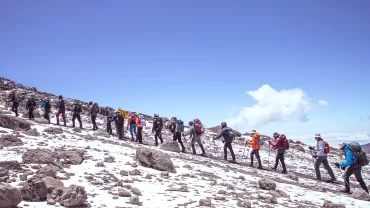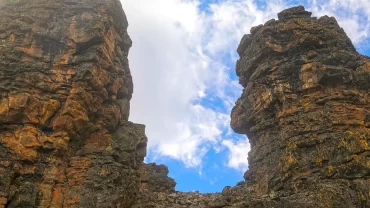Mount Kilimanjaro, located in Tanzania, is the highest free-standing mountain in the world and the tallest peak in Africa, standing at an impressive 5,895 meters (19,341 feet) above sea level. Every year, thousands of adventure seekers from around the globe attempt to reach its summit, Uhuru Peak. Unlike other high-altitude climbs, Kilimanjaro does not require technical mountaineering skills, making it one of the most accessible yet demanding treks. However, numerous misconceptions about the climb lead some to underestimate the challenge while discouraging others from attempting it.
In this article, we will debunk the most common Kilimanjaro climbing myths and provide a realistic picture of what it takes to reach the summit successfully.
Myth 1: “Climbing Kilimanjaro is easy because it’s just a walk”
While it’s true that Kilimanjaro is not a technical climb—meaning you don’t need ropes, harnesses, or mountaineering experience—it is far from easy. The combination of high altitude, steep terrain, and unpredictable weather makes this trek physically demanding. Trekkers face long hiking days and significant elevation gain, making preparation essential especially choosing the right outfitter
Myth 2: “Anyone can climb Kilimanjaro”
Although many people successfully summit Kilimanjaro, it requires good physical fitness and mental resilience. Altitude sickness can affect even the fittest climbers, and those who don’t train properly may struggle. While determination plays a role, proper preparation, acclimatization, and following the guidance of experienced guides are crucial, Very important to have a well trained guide.
Myth 3: “The shortest route is the best route”
Some climbers assume that taking the shortest route, such as the Marangu Route (5-6 days), increases their chances of success. In reality, shorter routes offer less time for acclimatization, leading to higher failure rates due to altitude sickness. Longer routes like Lemosho and Northern Circuit provide better acclimatization and significantly improve the chances of reaching the summit.
Myth 4: “Altitude sickness only affects unfit climbers”
Altitude sickness does not discriminate. Even elite athletes can suffer from it if they ascend too quickly. Symptoms such as headaches, nausea, and dizziness can appear at high elevations. To minimize the risk, climbers should follow the “climb high, sleep low” rule, stay hydrated, and choose routes with gradual altitude gain.
Myth 5: “Porters and guides aren’t necessary”
Some adventurers believe they can carry their own gear and navigate the mountain without assistance. However, hiring porters and guides is not just a luxury—it’s a necessity. Guides ensure safety, monitor altitude sickness symptoms, and provide valuable knowledge about the mountain. Porters help carry heavy loads, allowing climbers to focus on the trek itself. Supporting ethical tour operators ensures fair treatment and wages for porters and guides.
Myth 6: “The summit is the end of the journey”
Reaching Uhuru Peak is a remarkable achievement, but it’s only half the challenge. Descending can be just as demanding, if not more, due to fatigue and the strain on knees and joints. Proper trekking poles, controlled pacing, and staying hydrated are essential for a safe descent.
Conclusion
Climbing Kilimanjaro is a thrilling yet challenging adventure, and understanding the realities of the trek is essential for success. By debunking these Kilimanjaro climbing myths, trekkers can prepare adequately, make informed decisions, and increase their chances of reaching the summit safely. With the right mindset, preparation, and support, the journey to Uhuru Peak can be one of the most rewarding experiences of a lifetime.
Are you ready to take on the challenge? Plan your Kilimanjaro trek with experienced guides and make your dream summit a reality!





Comment (0)